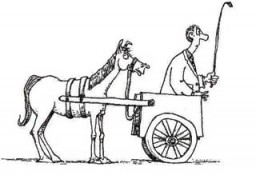I heard this fervent command not from the lips of a Sunday morning television evangelist but in a commercial on a prime-time radio show.
The ad features the CEO of a training company who uses short radio spots to promote to business owners his sales training programs on how to motivate and manage a sales force.
What does spirituality have to do with selling products and services in the marketplace? A lot, according to this sales trainer.
He suggests that sales people need to clean up on the inside in order to present a positive attitude on the outside. If they are holding onto any anger or resentment, then it is only a matter of time before they dump that negativity onto prospects and clients, thereby hurting the bottom line of the business owner.
We’ve all been knocked down in life because failure and defeat are part of life. Failure is inevitable. That’s why so many parents are keen to have their children participate in competitive activities, such as sports, chess, spelling bees – anything that can provide an experience of victory and defeat. The sooner they ride the roller-coaster of life’s ups and downs, the sooner they have a chance to adjust to reality.
As young children, we need our basic requirements handed to us because we cannot fend for ourselves. As we age, we are supposed to learn skills to help us do so. If we don’t learn those skills, or if we don’t apply what we learn, the world will often teach us in the manner of a harsh taskmaster. You can’t cheat life.
One of the most difficult transitions we make from childhood to life as teens and then as adults is to discover that our selfish needs are not the center of the universe. At some level, we need to learn compassion for and service to others.
The sales trainer mentioned above knows that even the best sales performers will face rejection more often than they will get a sale. One of the key factors of success for any salesperson is to persist in the face of rejection, to know that each ‘No’ brings them closer to a ‘Yes.”
Anybody can make a sale, given a proven product and a proven method for selling that product. What gets in the way of a sale is very often a person’s attitude towards failure and their ability to get up after being knocked down by rejection.
A rejection is often felt personally and can foster feelings of anger or resentment or fear. When that happens, it can show up in your attitude towards others. As the sales trainer knows, a negative attitude produces negative results.
Rejection is just a part of life. Successful people know how to process the negative experiences of life. I think it is important to recognize that most successful people have a spiritual dimension to their lives to help them process those experiences. They connect to it; they realize that their work is part of something bigger than them and their needs.
Too often we focus only on the financial aspects of work. When we do so, we let work undermine our hunger for spirituality. The world of work tends to make us dry and weak spiritually. By contrast, successful people often exhibit an air of enthusiasm about their work. They are their own best spokespersons for what they do. They inspire confidence in themselves and their work.
The roots of both words, enthusiasm and inspiration, are related to spirituality. The source of the word ‘enthusiasm’ is Greek , for “having the god within.” The word “inspiration” comes from Latin, which meant originally “to blow into”, to describe God giving Adam the breath of life.
Successful people have learned that their achievements are predicated to some extent on the good energy they bring into the world. They have poured their energy, love, talent, and creativityinto others through business, public service, teaching, coaching, volunteering, art, or some kind of investment in others.
And, by doing so, they have achieved success in the more important dimensions of life, such as their health, self-respect, happiness, courage, self-worth and relationships.
When your spiritual house is in order, it shows up in your work. It’s part of living a better story for your life.
George Dutch
www.jobjoy.com












 Do you think about changing jobs? The power to do so is right under your nose…well, behind your nose actually! Stored in your brain are memories about events and activities you truly enjoyed in life since childhood. Here are some tips for analyzing your life history for key success factors that reveal work that is personally and financially rewarding.
Do you think about changing jobs? The power to do so is right under your nose…well, behind your nose actually! Stored in your brain are memories about events and activities you truly enjoyed in life since childhood. Here are some tips for analyzing your life history for key success factors that reveal work that is personally and financially rewarding.